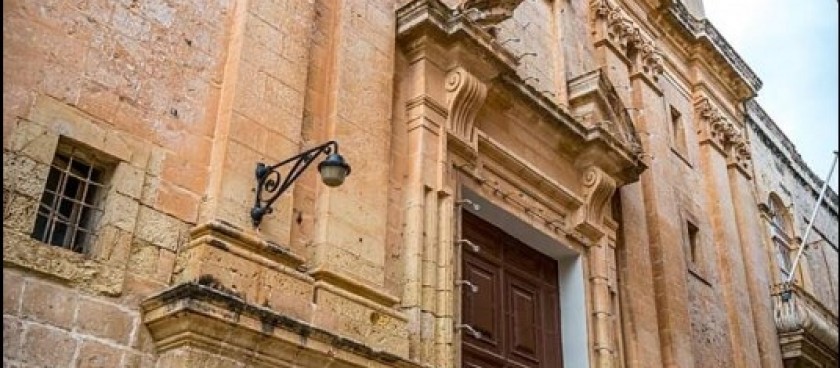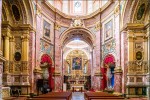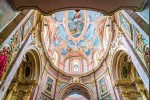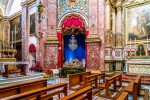- #MT58
- Triq Iż-Żurrieq, Iż-Żurrieq, Malta
- Working hours*:
The chapel is open for visits every first Sunday of the month, from 9.00 am to 12 noon. - * - opening and closing times as well as entrance prices, are subject to alterations without notice. Visitors are advised to check before visiting.
- 35.8392814, 14.4709441 Copy to clipboard Copy
-
#Churches
Preti is the author of the painting in the main altar depicting the scene of the Annunciation of the Lord. The elaborately carved and gilded frame is the work of Pietro Paolo Troisi. A valuable monument is also the processional figure of the Mother of God from Mount Carmel chisel Andrea Imbrolla.
Many valuable items from the church's furnishings were plundered by the French who plundered the church in 1798. The rebellious inhabitants of Mdina, who barricaded the door and struck the bells, did not allow the final devastation of the church, which signaled the outbreak of the uprising against the French occupants.
History
The now uninhibited village of Ħal-Millieri was first documented in 1419 though it originates from Roman or even pre-historic times. The present church was built around 1450 on the site of an earlier 13th century chapel. The Annunciation Chapel at Ħal-Millieri was most probably used as a Mosque when originally built. Its architecture supports this view; the apse was probably a qibla and the building points more or less to Mecca.
Studies on the skeletal remains, of those buried in the medieval period, revealed evidence of the probable first cases of syphilis in Malta.
The chapel was consecrated in 1480. During Monsignor Pietro Dusina's apostolic visit to Ħal-Millieri, in 1575, he found that there were a total of four churches in the area. Only two of these remain standing; The Annunciation and St John the Evangelist. During his visit, Dusina found that the church was in a state of good repair, had three altars and paved. However, he found that the church was not equipped with sacred vestments, income or even a rector. At his order the side altars were removed. In 1781, Archbishop Vincenzo Labini visited the chapel but found it to be in a neglected state. In the early 19th century, Ġuze Magro from Żurrieq restored the church. It was blessed by Reverend Gejtan Buttigieg in 1809. By time the chapel fell in disrepair until 1968 when the 'Teenagers Din l-Art Helwa' began cleaning the chapel. It has been recorded that upon cleaning, at least thirteen trucks worth of rubble and debris were removed.
In 1970, a Trust was set up on the initiative of the Żurrieq Council and the management of the chapel was given to Din l-Art Helwa who restored the chapel.
Architecture and Interior
A pathway leads to the chapel and one has to descend three steps to enter. The chapel is built in the late medieval style. The square doors appear to have been originally ogival which is a common characteristic of Gothic architecture. The church has a height of 7.3 metres and a width of 5.2 metres.
The interior of the church consists of four pointed arches typical of medieval churches. The arch closest to the altar has the remains of a Rood screen. The church has one altar and includes a painting of the Annunciation above it. It was painted by Renè Sacco in 2003. The church also has a number of tombs. Also beside the church a number of graves were discovered.



